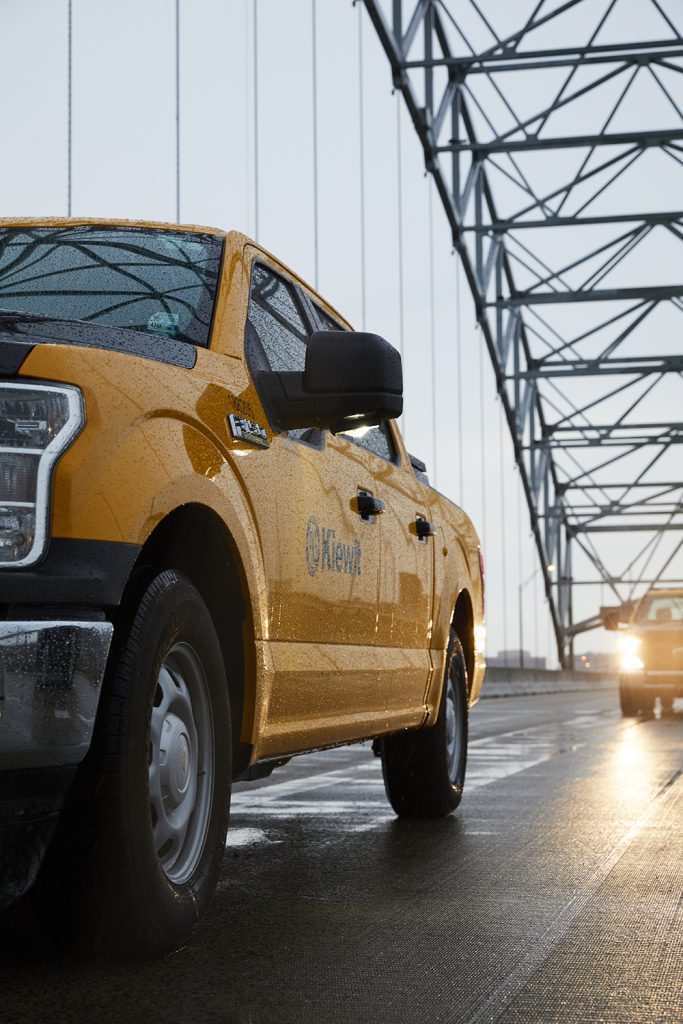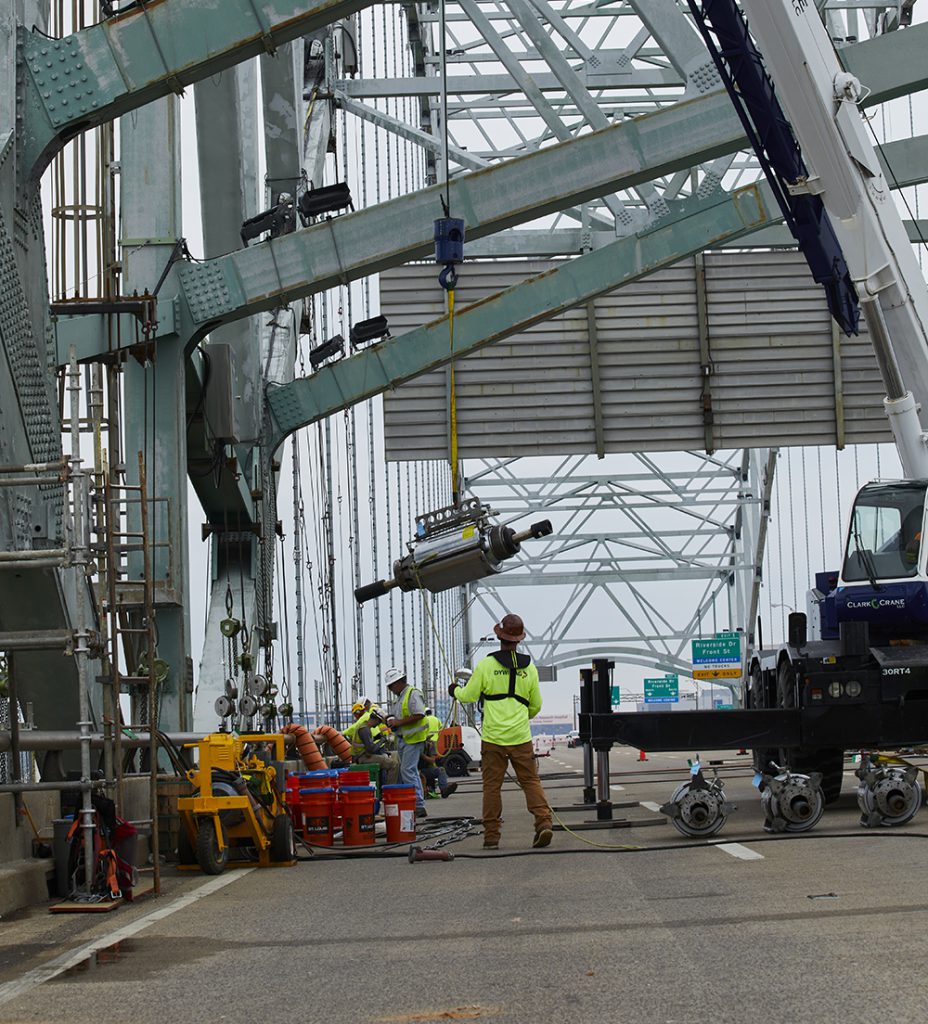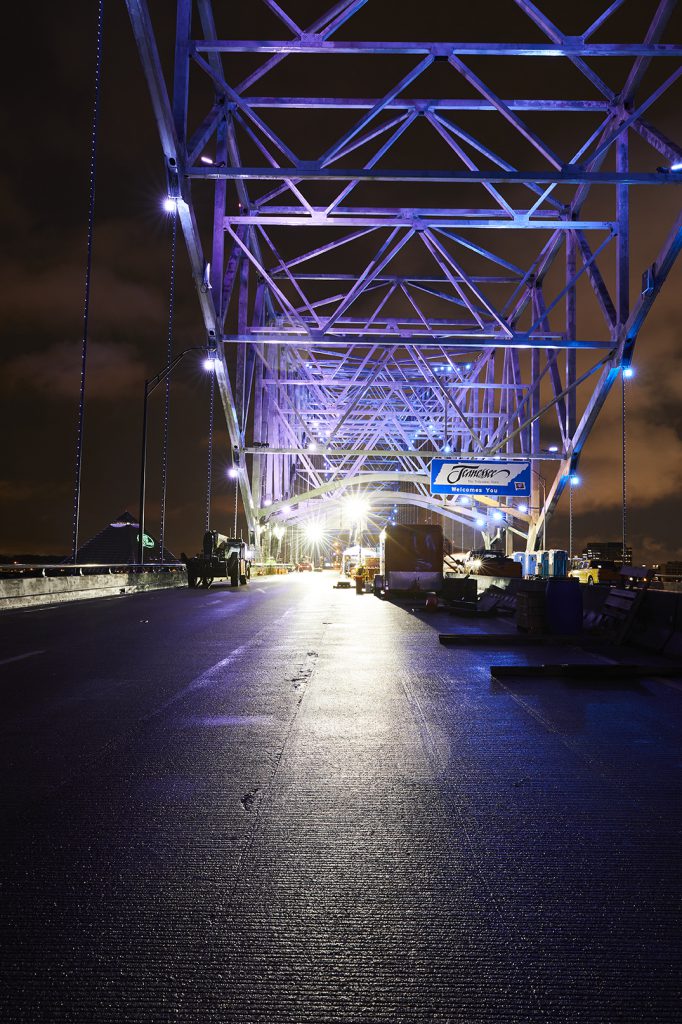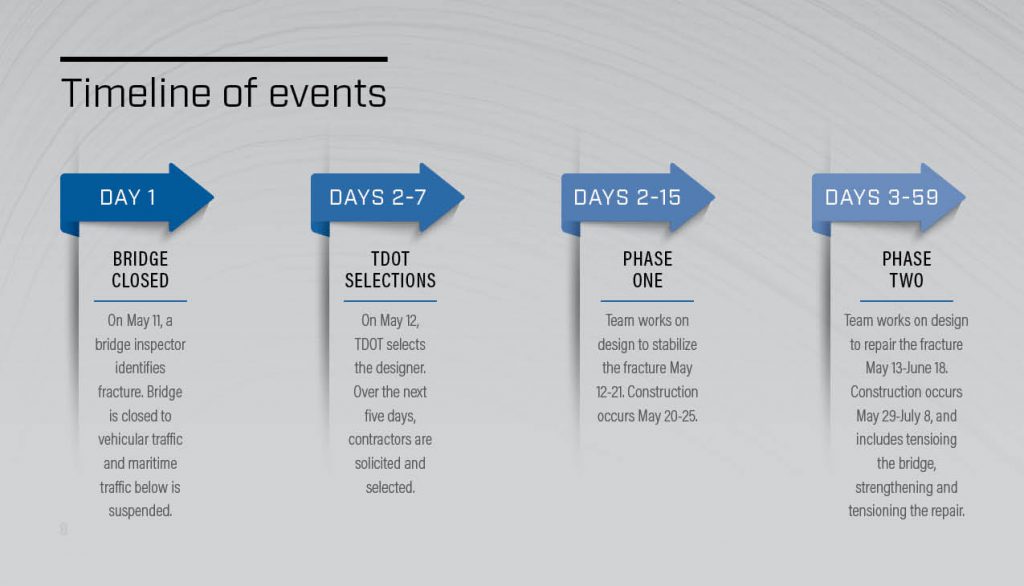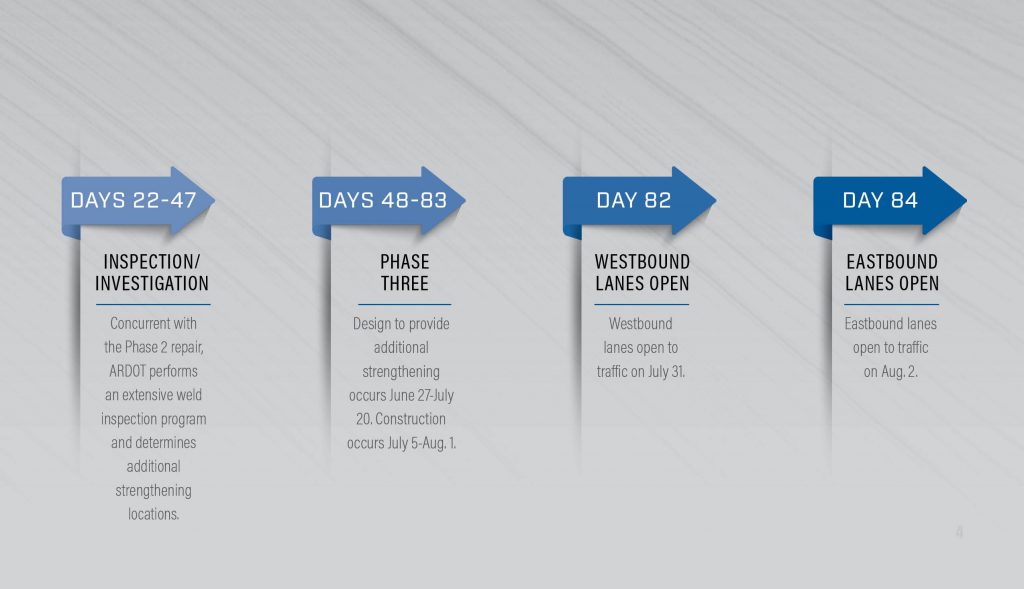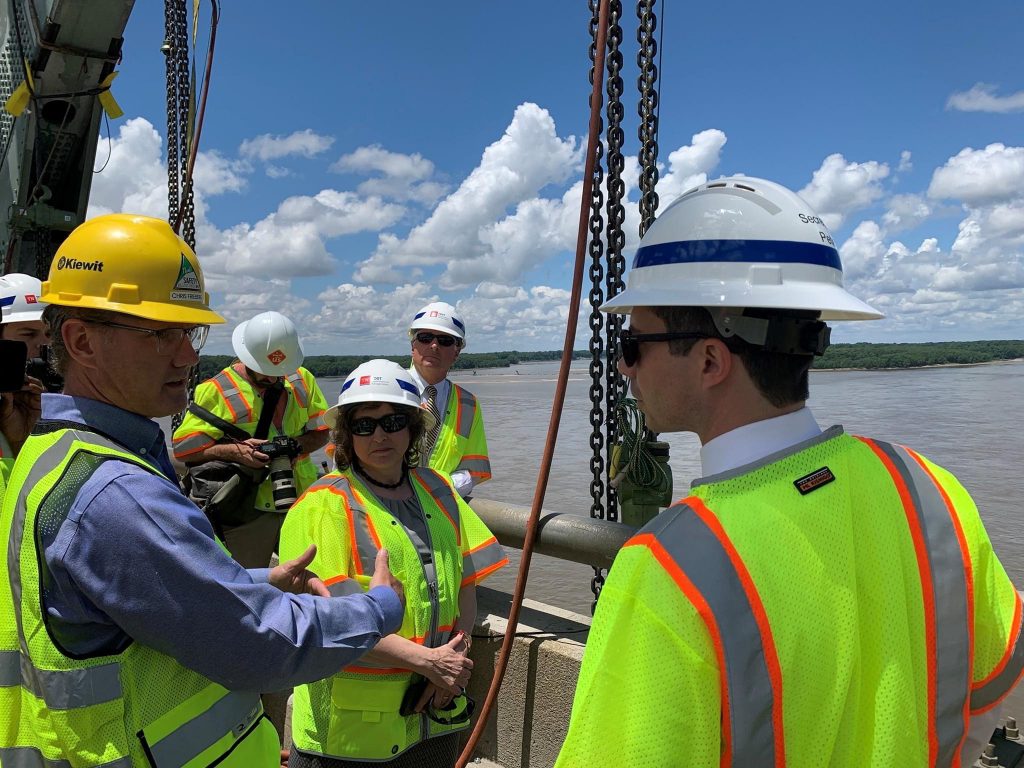On Tuesday, May 11, 2021, Arkansas Department of Transportation (ArDOT) inspectors discovered a fracture on the Hernando de Soto Bridge.
Officials immediately halted vehicle traffic on the roadway and ship traffic below it on the Mississippi River as they assessed the damage. The 50-year-old bridge connects Memphis, Tennessee, to West Memphis, Arkansas, via Interstate 40.
By May 14, the Tennessee Department of Transportation (TDOT) released a request for proposals (RFP) for repairs to the bridge. On May 17, TDOT informed Kiewit Infrastructure South Co. it had won the job.
Over the next 11 weeks, Kiewit crews worked around the clock alongside TDOT and ArDOT officials, TDOT consultant Michael Baker, Inc., ArDOT consultant HNTB, and many other partners to complete temporary and then permanent repairs. Leveraging the collective knowledge and resources of the entire Kiewit organization helped safely reopen the bridge to traffic only 83 days after the crack’s discovery.
Kiewit teams mobilized quickly to brainstorm innovative ways to repair the I-40 Hernando de Soto Bridge after a fracture was discovered, forcing the bridge to be closed to traffic.
A team of experts
Less than three hours after receiving the RFP, 10 Kiewit personnel were discussing an approach to the repairs. Thirty more colleagues joined a call the next day. Senior operations leaders from across the country and bridge engineers from Kiewit Infrastructure Engineers were some of the key participants who helped brainstorm construction methods and provide solutions to the client.
Moving work off the water
TDOT initially anticipated repairs would have to be done from the water with manlifts and cranes. Kiewit’s pursuit team engaged several employees from the company’s East Coast operations, where repairing aging and structurally deficient bridges is common. Based largely on this experience, Kiewit proposed an alternative of performing the repair from a platform attached to the bridge deck, resulting in a faster and safer repair.
When it came to the permanent repair, Kiewit’s preconstruction team saw significant risks with the stability of the bridge during the removal and replacement of the fractured member. The team worked with internal experts to develop alternative repair options. Kiewit shared the ideas with TDOT, ArDOT, Michael Baker, Inc. and HNTB, discussing together the best solution to repair the bridge and maintain the safety and stability of the structure.
The collaboration resulted in a permanent repair plan of strengthening the member with plates and avoiding safety and constructability risks.
“We selected Kiewit. We thought they had a good approach and a good plan,” said TDOT Director of Construction Brian Egan. “They actually addressed working from above and how they would do that from the bridge and did their own analysis. They proved to be very, very good to work with and competent and capable to provide that assistance in design and obviously to expedite the construction.”
Ultimately the project required three phases of construction to stabilize the bridge, repair the fracture and strengthen additional locations.
Quick arrival of people, equipment and materials
Once the project was awarded, people, equipment and materials started arriving to the Tennessee/Arkansas border.
“From the time they put out the RFP, we were basically working seven days a week around the clock,” Kiewit Infrastructure South Co. Vice President Chris Frieberg said. “As soon as we were selected, we started mobilizing and getting people to the site.”
Staff and craft came from around the country. Local supervisors like Jordan Gregg, who knew the area and the client, were joined by supervisors Dave Kowalski and Alex Gioseffi with experience in bridge repair work.
Working from the bridge deck instead of the water wasn’t just safer and easier, it required less equipment. Instead of towing a barge from hundreds of miles away, crews coordinated delivery of smaller equipment from nearby.
“We used generators, compressors, man lifts and chain hoists primarily,” Frieberg said. “We were able to use the bridge itself as our hoisting mechanism to minimize the amount of equipment we needed throughout the job.”
Relationships matter
Existing relationships were crucial to the job’s success.
Kiewit was counting on material suppliers and subcontractors to support the fast-paced project. In some cases, Kiewit’s experience with those firms spanned 20-30 years or more.
“In the current environment, it’s difficult to get materials and we knew our subcontractors and suppliers were busy,” Frieberg said. “They did everything they could to deliver whatever parts, pieces and services were needed to make things happen. These long-term relationships really helped us. We were able to put a lot of faith in them to be able to tell our client we’d be able to deliver on schedule.”
Longstanding relationships with both TDOT and ARDOT were also important. Kiewit has completed many projects for both clients and was actively working on others during the Hernando de Soto repairs. The Construction Manager/General Contractor (CMGC) contract model worked well for other projects and was used for the repairs.
“CMGC puts us in a collaborative environment with the client and the designer,” Frieberg said. “They were open to our ideas. We were open to their ideas. We all worked to come up with the right solution and implement it quickly. I think the delivery model is a primary reason we were successful.”
Incredible fix completed
On May 11, the discovery of the crack put a national spotlight on the deterioration of U.S. infrastructure. Even Secretary of Transportation Pete Buttigieg visited the bridge, highlighting the concern, but was appreciative of the work underway.
On Aug. 2, 83 days later, with traffic flowing again, the spotlight was on what teamwork and innovative thinking can accomplish in a crisis. The repairs are permanent and anticipated to ensure full-service life of the bridge.
“Kiewit Infrastructure’s involvement was instrumental to the success of the I40 Hernando de Soto Bridge repair with safety at the forefront and schedule close behind. Their execution was excellent,” said TDOT Commissioner Clay Bright.
“It was a challenging job, but you really feel there’s a ton of importance on what you’re doing to come up with the right solution,” Frieberg said. “Every one of our people felt the same way and volunteered to come help because they wanted to be part of something so important. We’re proud to deliver projects like this for our clients.”
